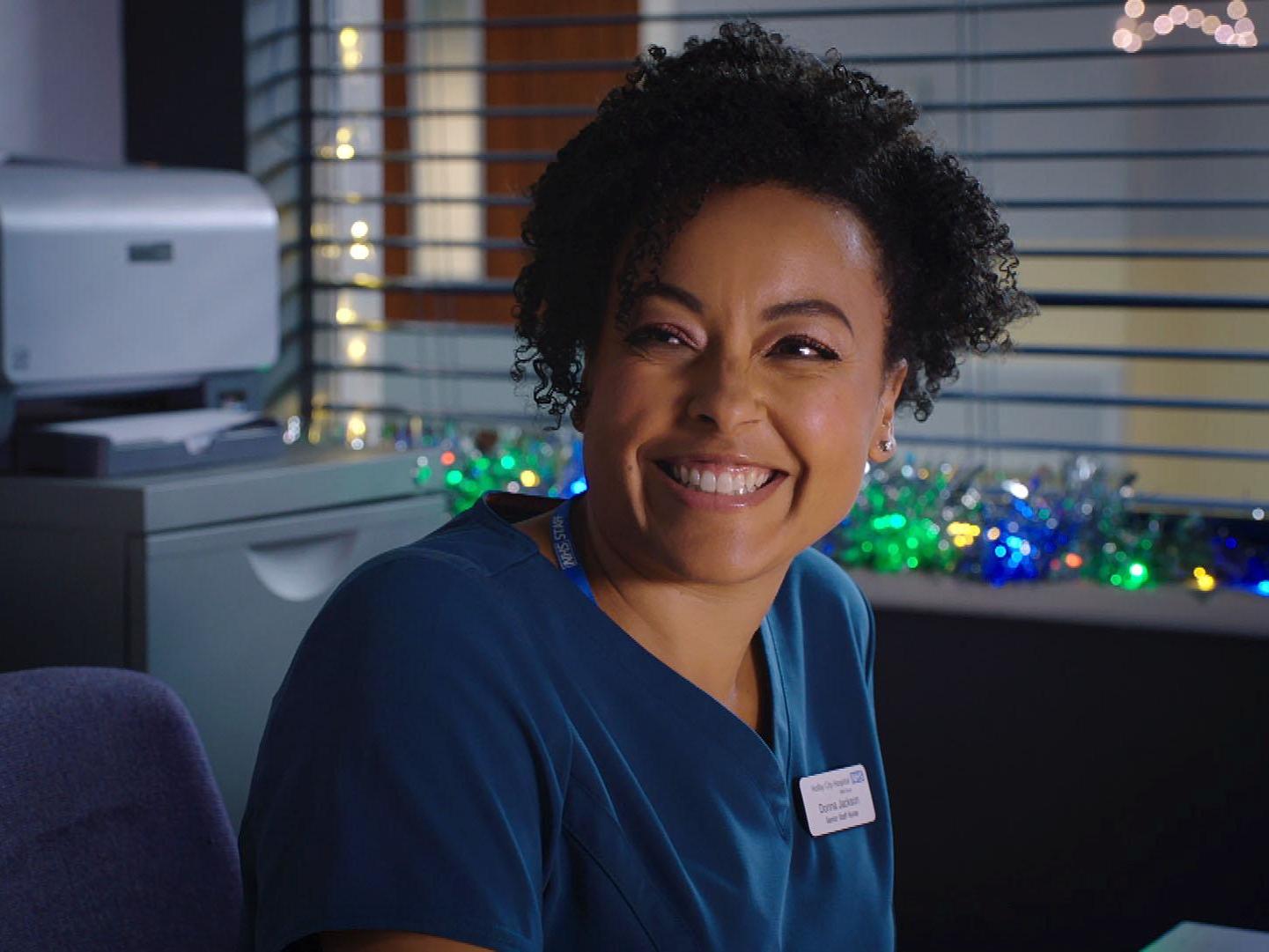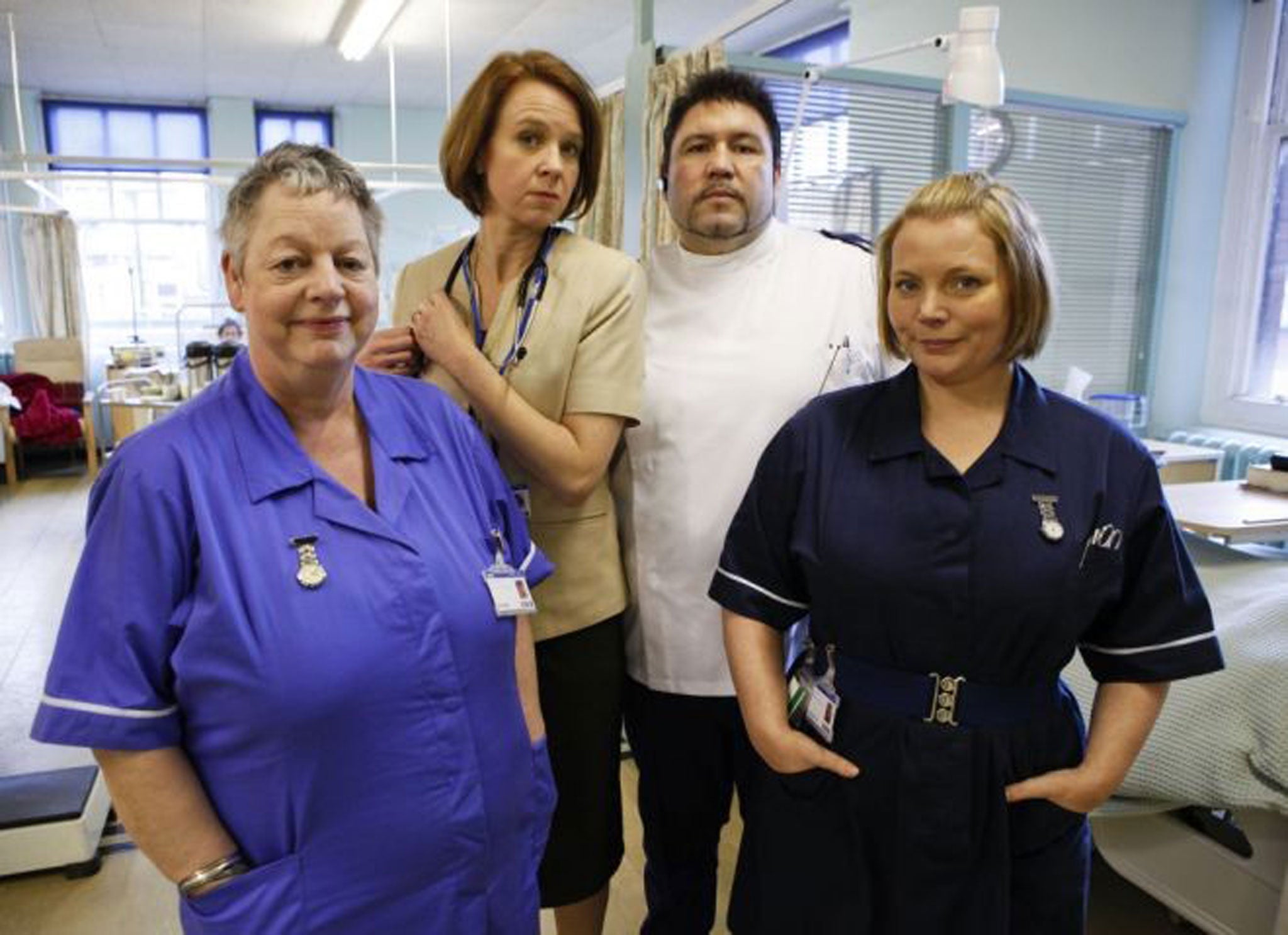Holby City at 20: How the NHS has been depicted on screen, from Carry On Nurse to Casualty and Getting On
UK has celebrated its doctors and nurses in everything from bawdy comedies dwelling on embarrassing ailments and sexual tension to A&E dramas about saving lives

Your support helps us to tell the story
From reproductive rights to climate change to Big Tech, The Independent is on the ground when the story is developing. Whether it's investigating the financials of Elon Musk's pro-Trump PAC or producing our latest documentary, 'The A Word', which shines a light on the American women fighting for reproductive rights, we know how important it is to parse out the facts from the messaging.
At such a critical moment in US history, we need reporters on the ground. Your donation allows us to keep sending journalists to speak to both sides of the story.
The Independent is trusted by Americans across the entire political spectrum. And unlike many other quality news outlets, we choose not to lock Americans out of our reporting and analysis with paywalls. We believe quality journalism should be available to everyone, paid for by those who can afford it.
Your support makes all the difference.BBC medical drama Holby City celebrates its 20th birthday on 12 January.
The 20th series of the show, which was spun off from Casualty in 1999, commenced on 2 January, meaning Holby City has now wracked up some 800 hours of broadcasting, attracting awards and criticism in equal measure.
Teaching its actors basic procedures and consulting surgeons on scripts, the show has always sought to dramatise the realities of life in the NHS and the personal pressures and strains on those who keep it running.
Britain's health service has given us a rich source of drama on screen since its introduction in 1948, hospitals being venues where citizens of all classes and walks of life come together, often in emergency situations where tensions run high.
One of the earliest fictional works to address conditions in Aneurin Bevan's healthcare revolution was White Corridors (1951).
The story of surgeon Dr Sophie Dean (Googie Withers) in love with troubled research pathologist Neil Marriner (James Donald), Pat Jackson’s film was adapted from Helen Ashton’s novel Yeoman Hospital (1944) and ahead of its time in its frank depiction of the day-to-day running of a busy institution.
More typically, post-war Britain regarded medical matters as the preserve of comedy.
Ralph Thomas’s Doctor in the House (1954), starring Dirk Bogarde and Donald Sinden as trainee physicians, sparked a series of seven films based on Richard Gordon’s novels about his own experiences as an anaesthetist and surgeon at St Bartholomew’s Hospital in London, with Leslie Phillips later succeeding the leads.
The box office success of these early entries led to Carry On Nurse (1959), Carry On Doctor (1967) and Carry On Matron (1972), the franchise that gave Britain its favourite camp catchphrase of “Oh matron!” and offered saucy jokes about sexual tension rife among the staff (“Well! I’ve heard of the bedside manner but this…”). Plus rectal thermometers being replaced by daffodils.
Like a Bamforth postcard at the seaside, innuendo and double entendres at the expense of the pyjama-bound were a must.
More recently, Channel 4’s sitcom Green Wing (2004-06), masterminded by Victoria Pile and starring Tamsin Greig, Stephen Mangan and Julian Rhind-Tutt, found surreal sketch humour on the wards.
Sharing a romantic angle with its American counterpart Scrubs (2001-10) but none of that show’s hugging-and-learning earnestness, Green Wing emphasised the sheer weirdness of being removed from one’s everyday life to be poked and prodded by strangers. Camels in the corridors, coffee enemas and ski pole-related bathroom mishaps - nothing was too odd.
Taken together, these outings all made light of the serious business of being ill – a public service for those genuinely unwell and daunted by the looming prospect of a prolonged hospital stay. Consultants were revealed to be as arrogant, conceited and fallible as the next person, not intimidating figures to be revered without question.
This process of demystification has since been revived by Channel 4’s Embarrassing Bodies (2007-), in which Dr Christian Jessen and others examine the various genital complaints of members of the public in the hope of tackling stigma and encouraging sufferers to come forward and seek treatment.
The NHS has more commonly been the subject of weekend drama examining the running of hectic accident and emergency (A&E) departments, where Casualty and Holby City have distinguished themselves since the former began in 1986.
Casualty – shot in Bristol and Cardiff – was created by Jeremy Brock and Paul Unwin as a direct riposte to Margaret Thatcher’s Conservative government, highlighting the dedication and professionalism of NHS staff operating in stressful conditions at a time when the jewel in the crown of the welfare state was most directly under threat from Tory policy.
Social-realist in spirit, the show has none of the glamour or self-importance of American prestige medical dramas like ER (1994-2009), House (2004-12) and Grey’s Anatomy (2005-)
Like ITV’s roughly equivalent police procedural series The Bill (1984-2010), the show has proved consistently popular, cultivating a loyal mainstream audience and serving as the starting point for an array of British acting talent: future Hollywood stars Kate Winslet, Orlando Bloom, Minnie Driver, Christopher Eccleston, Tom Hiddleston, Ray Winston and Martin Freeman all received key early breaks among its cast.
Both Casualty and The Bill offer a comforting and uplifting viewing experience, helping to humanise these arms of the state and stressing the decency and competence of the majority of those working within their confines.
ITV ran a loosely similar kids’ version, Children’s Ward, between 1989 and 2000, devised by Paul Abbott. Covering a range of different conditions from cancer to child abuse, the series won a Bafta in 1997.
Other shows like Peak Practice (1993-2002), Doctors (2000-) and Doc Martin (2004-), all likewise set in fictional British towns, offer the same reassuring experience at a gentler pace and at a regional level: dramatising the lives of GPs in Derbyshire, Birmingham and Cornwall respectively.
One of the most personal accounts of NHS care came with Dennis Potter’s semi-autobiographical The Singing Detective in 1986.
This six-part series starring Michael Gambon concerned a crime writer suffering from psoriatic arthropathy, a painful and disfiguring affliction of the skin and joints, who fantasises about the plot of his forthcoming pulp novel and recalls his childhood growing up in the Forest of Dean to distract himself from the horrors of treatment.
Its unflinching attention to detail, grounded in its author’s own experience, produced some of the finest television the BBC has ever commissioned.

Perhaps the best recent diagnosis of the ills of the NHS is Jo Brand’s BBC Four sitcom Getting On (2009-12), a searing satirical critique in the spirit of Peter Nichols’s 1969 play The National Health.
Co-created by the comedian’s co-stars Vicki Pepperdine and Joanna Scanlan, the series focuses on two sisters and an overbearing consultant working on a women’s geriatric ward. Shot under clinical florescent light, the series depicted the NHS as a Kafkaesque bureaucracy of paperwork and political correctness, scant resources and desperate measures.
A timely polemic crying out for something to be done, Brand is entirely convincing as an ageing cockney carer thanks to her own experience as a psychiatric nurse before she entered the world of stand-up.
Peppderine’s patronising Dr Pippa Moore is equally memorable, her determination to expand the Bristol Stool Chart “from the current seven to an exhaustive 31 types of patient faeces” every bit as deranged as it sounds.
Join our commenting forum
Join thought-provoking conversations, follow other Independent readers and see their replies
Comments